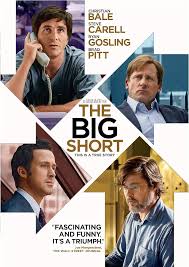The Big Short: A Deep Dive into Financial Turmoil

Introduction
The Big Short, a film directed by Adam McKay and based on Michael Lewis’s bestselling book, has become a cultural touchstone in understanding the 2008 financial crisis. The film and book not only depict the events leading up to the market collapse but also explore the greed, corruption, and complex financial instruments that contributed to the recession. Understanding the key concepts behind The Big Short is relevant today as discussions about financial regulations and economic equity persist in the current economic climate.
How It All Began
The financial crisis was precipitated by the collapse of the housing market in the early 2000s, primarily fuelled by subprime mortgages and a housing bubble. The Big Short follows a few individuals who, sensing the impending doom, bet against the American housing market. Investors like Dr. Michael Burry, Mark Baum, and Jared Vennett realised the irrational behaviour of the financial institutions and seized the opportunity to capitalise on it.
The Instruments and Strategies
In the movie, the protagonists utilise various financial instruments, particularly collateralised debt obligations (CDOs) and credit default swaps (CDSs), to short the housing market. These instruments became emblematic of the era’s complex financial engineering, where risk was often obscured. The film does a remarkable job illustrating these intricate concepts in an accessible manner, helping a broader audience understand the dangers of complex financial products.
The Aftermath and Current Relevance
The fallout from the financial crisis led to severe consequences: millions lost their homes, unemployment rates soared, and public trust in financial institutions plummeted. The U.S. government intervened with significant bailouts, which spurred ongoing debates about moral hazard and accountability. In the years following, regulatory reforms such as the Dodd-Frank Act focused on reducing risks in the financial sector, but critics argue that many of the underlying issues remain unaddressed.
Conclusion
The Big Short not only provides insight into a transformative moment in financial history, but it also serves as a cautionary tale. As the global economy continues to grapple with challenges such as income inequality, stock market volatility, and potential bubbles, the lessons from 2008 remain pertinent. Investors and consumers alike are encouraged to think critically about financial products and the implications of their decisions. Understanding The Big Short is essential for anyone navigating today’s complex economic landscape, serving as a stark reminder of the fragility inherent in our financial systems.









